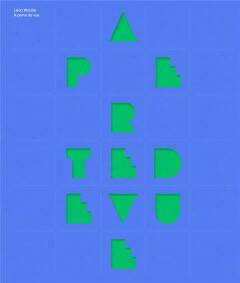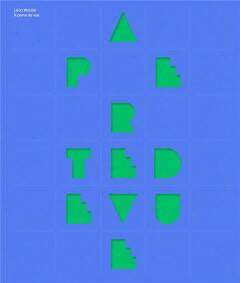
- Afhalen na 1 uur in een winkel met voorraad
- Gratis thuislevering in België vanaf € 30
- Ruim aanbod met 7 miljoen producten
- Afhalen na 1 uur in een winkel met voorraad
- Gratis thuislevering in België vanaf € 30
- Ruim aanbod met 7 miljoen producten
Zoeken
Omschrijving
Practising an art that has been built up assiduously and not without a few notes of humour, in the house designed for him in the 1970s by the architect Charles Vandenhove, for whom he has also created certain artistic integrations, the Liège artist Léon Wuidar (°1938) has produced a body of work that is as coherent as it is surprising. After the Museum Haus Konstruktiv in Zurich, the MACS is staging a major retrospective which brings together a number of his paintings, collages and sketchbooks created between 1962 and the present day. With its title À perte de vue (As Far as the Eye Can See), the exhibition emphasises the immense labyrinth of his oeuvre, as well as the "smiling rigour" of an artist who plays with lines and colours, words and objects.
In the 1990s, at the time when digital arts were emerging, Tamara Laï was one of the first Belgian artists to use the CD-ROM and the Web as supports to develop multimedia, interactive works which stood out through their poetic hypertext and rhizomatic narrative. Through her short, experimental road movies and subsequent, prolific video poems, she captured the experience of her journeys and encounters in the moment, reworked them with subtle special effects and shared them with these close yet distant virtual communities, whose members sometimes took part in her videos, often after chance meetings on the Web. Although her websites, cam & chat performances and videoconferences form a relatively ephemeral oeuvre and are selected regularly by international festivals, the MACS has chosen to focus on her videos, in a device that highlights the poetic blend of interwoven sensations and affects, images and sounds.
The artist lives and works in Liège, Belgium
In the 1990s, at the time when digital arts were emerging, Tamara Laï was one of the first Belgian artists to use the CD-ROM and the Web as supports to develop multimedia, interactive works which stood out through their poetic hypertext and rhizomatic narrative. Through her short, experimental road movies and subsequent, prolific video poems, she captured the experience of her journeys and encounters in the moment, reworked them with subtle special effects and shared them with these close yet distant virtual communities, whose members sometimes took part in her videos, often after chance meetings on the Web. Although her websites, cam & chat performances and videoconferences form a relatively ephemeral oeuvre and are selected regularly by international festivals, the MACS has chosen to focus on her videos, in a device that highlights the poetic blend of interwoven sensations and affects, images and sounds.
The artist lives and works in Liège, Belgium
Specificaties
Betrokkenen
- Auteur(s):
- Vertaler(s):
- Uitgeverij:
Inhoud
- Aantal bladzijden:
- 200
- Taal:
- Engels
- Geïllustreerd:
- Ja
Eigenschappen
- Productcode (EAN):
- 9782930368795
- Verschijningsdatum:
- 7/10/2021
- Uitvoering:
- Paperback
- Afmetingen:
- 210 mm x 240 mm
- Gewicht:
- 856 g

Alleen bij Standaard Boekhandel
+ 78 punten op je klantenkaart van Standaard Boekhandel
Beoordelingen
We publiceren alleen reviews die voldoen aan de voorwaarden voor reviews. Bekijk onze voorwaarden voor reviews.







